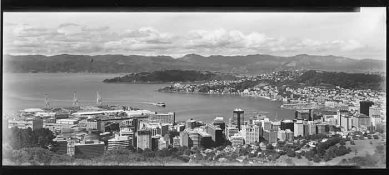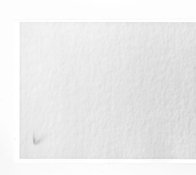sanking said:
Clayton,
This is obviously a very vexing thing, but I am not at all sure that the problem has been reduced to one of two things you suspect. In fact, I believe there still exists a strong possibility of light leaks caused by fit between the holder and back.
In some high contrast lighting situations it is possible that the light leaks might be caused by light reflecting off the bellows, but your sample shows more uneven density that I would expect even with an an extreme example of light reflecting off the bellows.
You could resolve the question by completely wrapping your camera in a black cloth or tent when you insert the film holder and make the exposure. If you do this and still get areas of uneven density on the negative you can be sure that the problem is one of the following: 1) bellows or camera leak, in front of the back, 2) light reflecting off the bellows, 3) light reflecting off the holder, or 4) some combination of the above. If, on the other hand you do this test and the negative is evenly exposed and developed, the problem is most probably due to fit between the holder and camera.
Failing any of the above there are problems that could take place out of the camera, as in loading, unloading, and developing.
Or perhaps the cause is none of the above. So I will say to you, as Lewis Carrol wrote a long time ago in Alice in Wonderland, "I weep for you," the Walrus said. " I deeply sympathize."
Sandy
Sandy
now I've had another think about it and read your post I tend to agree that I haven't narrowed it down to 2 problem areas. So I will look further into your suggestions.
I'm starting to think it may be a back leak problem, read on and I'll tell you why.
This is the third camera I've had a light leak problem with, all were either late model or new. All are panoramic cameras, the first 2 are rotating cameras. They both took endless time and testing to find the problem.
The first camera I decided to modify and upgrade it's performance. I sent it to a specialist in California, he did the work, tested it, sent me the negs, I ok'ed it and he shipped the camera back. First time I used it I had a bad light leak, both the guy in California and myself were dumbfounded. I had in my hands the test negs shot on a bright sunny day and they were perfect.
Eventually I found the leak and we deduced the only reason it leaked here in New Zealand was the very bright low angle light hitting it in a certain position every time I used it. Appears bright sunny days in California are no match for the bright light we get here.
Camera #2 was bought used but in mint condition from Florida. Seller stated the camera was flawless and he had never had any problems whatsoever with it. When I received it, it was indeed in the condition decribed, I couldn't find a mark on it.
First negs I shot had a light leak on it.........here we go again! Same story, the seller had proof the camera worked flawlessly.
This one took a long time to find the problem and when I found it, it was directly related to the bright low angle light we get here. An overcast day was no problem.
So I'm thinking Sandy might be onto something here and it may be a back leak problem. I'll test that next and let you guys know.
Clayton




 You shouldn't be having these sorts of problems with new holders. Unfortunately paper is less sensitive than film so it takes longer but at least it's shown a problem. If there doesn't seem to be anything obvious and all the light traps seem okay it'd be worth checking that everything is straight and true. You can sometimes spot a warp with the eyeballs. If not trying placing the holder on some flat glass or something similar (hanging it over the edge as necessary to clear the lip) and tapping each corner to see if there's any movement. If something wobbles rotate it 90 degrees and test again to make sure the glass is actually flat. If the same corner wobbles the holder is probably warped. It's also worth checking the camera back in a similar way if possible. Also run a straight edge along everything (camera back included) and hold it up to the light to make sure you can't see a gap and that it's all straight. If everything turns out okay we'll have to dig further.
You shouldn't be having these sorts of problems with new holders. Unfortunately paper is less sensitive than film so it takes longer but at least it's shown a problem. If there doesn't seem to be anything obvious and all the light traps seem okay it'd be worth checking that everything is straight and true. You can sometimes spot a warp with the eyeballs. If not trying placing the holder on some flat glass or something similar (hanging it over the edge as necessary to clear the lip) and tapping each corner to see if there's any movement. If something wobbles rotate it 90 degrees and test again to make sure the glass is actually flat. If the same corner wobbles the holder is probably warped. It's also worth checking the camera back in a similar way if possible. Also run a straight edge along everything (camera back included) and hold it up to the light to make sure you can't see a gap and that it's all straight. If everything turns out okay we'll have to dig further.
